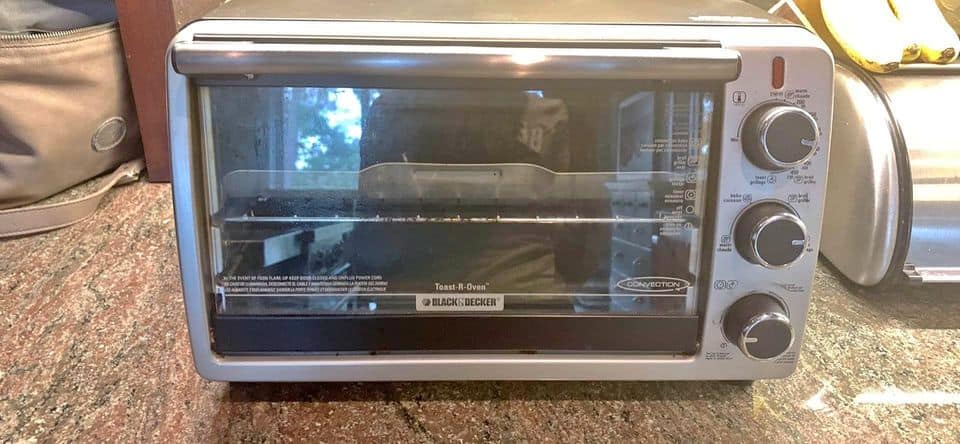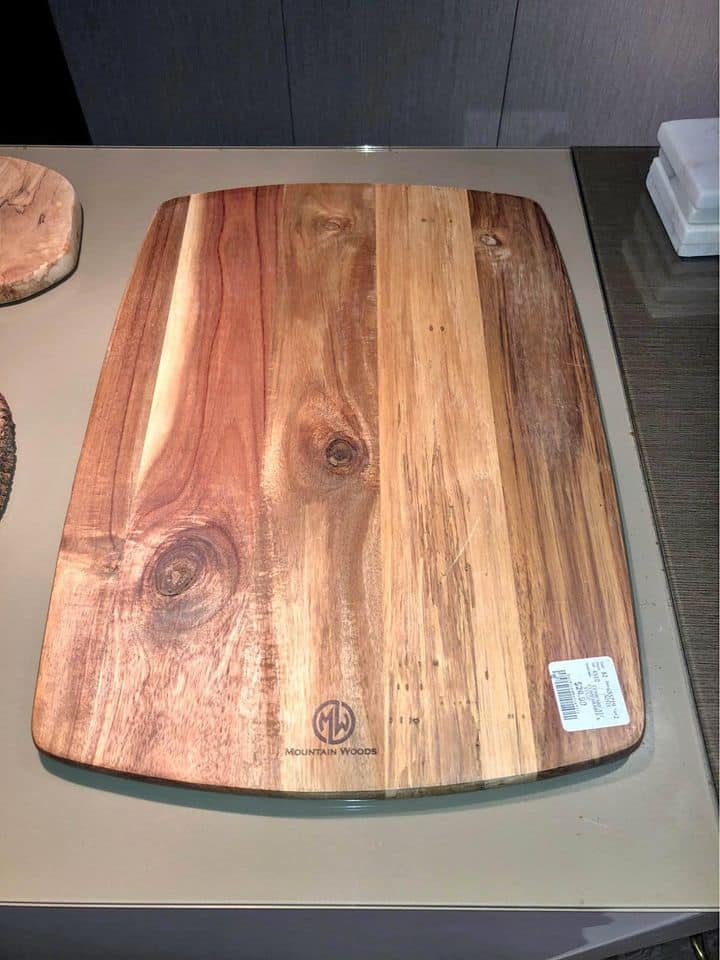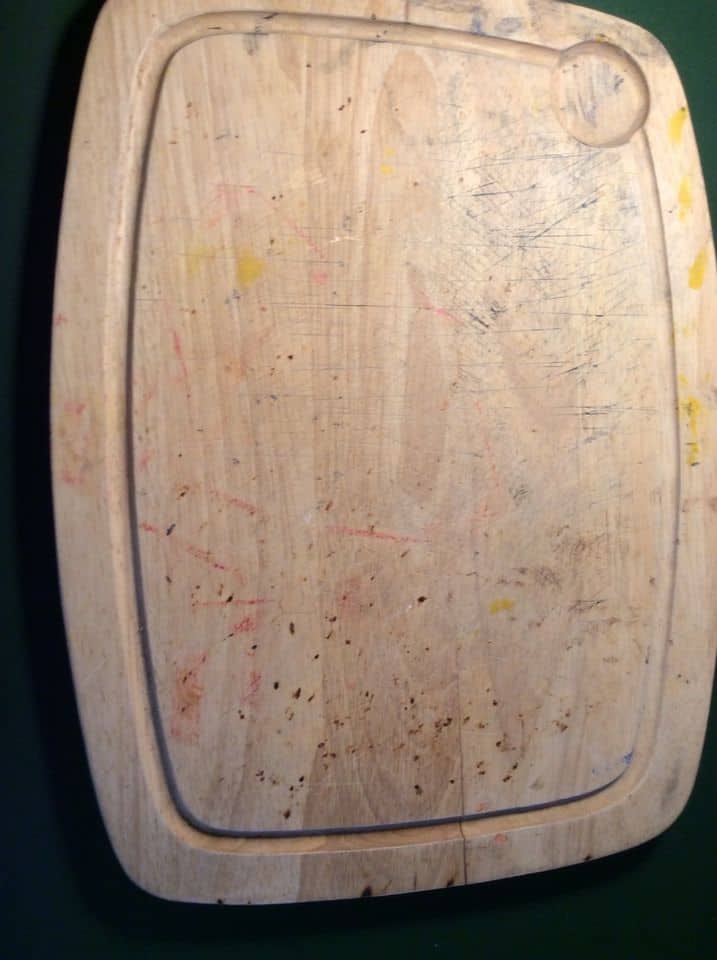You can put your wooden cutting board in the oven if you need to bake or roast some meals. Wood generally has the capability to withstand heat from the oven and can do well in the oven. So, your wooden cutting board is a good surface if you have some baking jobs.
However, some factors should be considered before putting wooden cutting boards in the oven. The most important is the heat setting of the oven being at the optimal levels while the wooden board is in there.
This article will show you the proper steps to put your wooden cutting board in the oven.
JUMP TO: Is It Ok To Put Wood Board in Oven | What Happens To Wood Board In Oven | Factors to Consider Wood Board In Oven | Bottomline |
- Wood boards can go in the oven if the temperature is kept optimal.
- Some hardwood cutting boards can withstand higher heat levels
- Wooden cutting boards in an oven shouldn’t be frequent.
- Using high heat with a wooden cutting board in the oven can cause fires.
Is It Safe to Put Wooden Cutting Boards In The Oven
Putting a wooden cutting board into the oven is safe as long as the temperature is optimal. The only danger involved with a wood board is the fire caused by high temperatures.
Most wooden cutting boards can withstand cooking or baking to a temperature of about 350 F. But certain types of wood can withstand higher levels of temperature.
Related Read: How to Disinfect Wood Cutting Board?
Wooden cutting boards made of strong and fire-resistant hardwood can resist a temperature of around 450F or more. Good examples of these wood types include;
- Mahogany
- Teak
- Walnut
If your wooden cutting board is made of any of these woods, you can confidently put it inside the oven. The wood has the strength to withstand the higher heat levels needed to cook.
CAUTION: Keep the heat below 450 Fahrenheit to reduce the chances of a fire.

What Happens to the Wooden Cutting Board In an Oven?
The high heat will affect the board and can cause immediate fires if the heat reaches a temperature of 700F. A fire can still occur if the heat level is higher than the melting point of the wood-cutting board, usually between 450 and 500F.
If the wooden cutting board has a flammable finish, the fires can occur much quicker without reaching any temperatures. Some fire-resistant coatings are added to wood to prevent fires, but these aren’t common among cutting boards.
Also Read: Bamboo Vs. Wood Cutting Board
Some of the effects of heat on wooden cutting boards include;
- Cracks: These are openings or holes that occur due to high heat. These holes allow moisture and contaminants to remain on your cutting board even after washing.
- Warping: Warping is a situation when wooden cutting boards lose their flat features. This occurs when the heat doesn’t spread properly across the cutting board. The side experiencing more heat becomes flattened.
- Swelling and shrinkage: Thermal expansion occurs when wood comes in contact with high heat. They may swell or shrink in its size during this process.
If your wood-cutting board exhibits any of these signs, you must replace it.

TIPS: The rate at which wooden cutting boards get bad depends on the heat level and period of heating.
Factors to Consider Before Putting Wooden Cutting Boards in The Oven
You can put the wooden cutting board in an oven, but there are some factors to consider, including;
Wood Type and Label
A common mistake made amongst cutting board users is buying based on aesthetics and size alone. While these are important factors, you need to consider the type of wood used to make the cutting board. This information gives you a perfect idea of the strength and weaknesses to expect from the cutting board.
Usually, the wooden cutting boards’ labels contain information about the wood type and other things. Some labels will have specific information about the heating properties of the wood-cutting board.
TIPS: If the wooden cutting board doesn’t have a label, ask before purchasing.
Wood Thickness and Present Condition
The wood thickness always matters when determining its reactions under heat. As explained above, the high heat causes the wood board to expand, swell and shrink. How quickly any of these will occur depends on the thickness of the board.
If the board is very thick, it will be harder for heat to cause cracks or holes in the board. Also, if the wood-cutting board is already in a bad state, it won’t take long before any side effects start happening.
CAUTION: The thickness of your wooden cutting board doesn’t stop warping, so still keep the temperature optimal.
Wood Finish
Wood items, including cutting boards, usually have finished to make the wood look and perform better. For wooden boards, the finish usually used is oil to reduce the absorption of the board and make it look better. Mineral oils are usually the preferred option.
It may be rare for the finish of cutting boards to cause a fire, but it is possible. Mineral oils generally have a 335F flashpoint to cause a fire. However, most times, the wood will have absorbed the oil, so it is usually not risky.

Source: Laguna Blog
CAUTION: Always be sure to understand the properties of the oils used for finishing the cutting board before putting it into the oven.
Oven Type and Heating Temperature
By oven type, I’m not referring to the brand of your oven or size. The heating element is the most important part when using a wood-cutting board in the oven.
First, you need to check the position of the heating elements to be sure that the heat will be heavy. Usually, these heating elements are either at the bottom or the top of the oven.
Some ovens have fewer or weaker heating elements at the bottom, while more active ones are at the top. That way, the top is usually hotter than the bottom.
Try to study the position of your heating element and keep the board at a distance from the heat. That way, the heat produced by the element spreads around the oven instead of hitting the board directly.
Also, be sure to use a thermometer to confirm the heat levels of your oven. Your oven may not work properly, and the heat levels will be very high.
Related Read: Can You Put Wood Cutting Board In Dishwasher?
Dirt
Dirty particles on your cutting board may cause fires faster than wood boards. As much as possible, try to wash the wood-cutting boards thoroughly before you put them in the oven.

Conclusion
You can use your wooden cutting board in your oven if you understand the type of board you have and the oven. High heat affects the wood boards, so be sure to keep the heat at optimal levels before putting it in the oven.
Also, try to reduce the time you use your wood-cutting board inside an oven. The time can also affect how quickly the oven will damage.
Most times, you may need to re-season your wooden board after you have used it in the oven. The heat will most likely melt the oil absorbed by the wood, so you’ll need a refill.
![Wood Cutting Board Vs. Plastic Board [Which is Safer?] Wood Cutting Board Vs. Plastic Board [Which is Safer?]](https://houseadorable.com/wp-content/uploads/2023/01/wood-board.jpg)
![27 Types of Cutting Boards Explained [Buying Guide Included] 27 Types of Cutting Boards Explained [Buying Guide Included]](https://houseadorable.com/wp-content/uploads/2022/12/cutting-board.jpg)
![Charcuterie Board Vs. Cutting Board [8 Differences] Charcuterie Board Vs. Cutting Board [8 Differences]](https://houseadorable.com/wp-content/uploads/2023/01/316322082_5650827684977137_862859335334204275_n.jpg)
![Bamboo Vs. Wood Cutting Board [9 Differences Explained] Bamboo Vs. Wood Cutting Board [9 Differences Explained]](https://houseadorable.com/wp-content/uploads/2023/01/cutting-board.jpg)
![Is Acacia Wood Good For Cutting Boards? [Explained] Is Acacia Wood Good For Cutting Boards? [Explained]](https://houseadorable.com/wp-content/uploads/2023/01/wood-table-top-with-acacia-chopping-board-with-blur-kitchen-counter-background-is.jpg)
![Is Bamboo Wood Good for Cutting Boards?[8 Reasons Explained] Is Bamboo Wood Good for Cutting Boards?[8 Reasons Explained]](https://houseadorable.com/wp-content/uploads/2023/01/316002766_5887666997938019_9068589372518329358_n.jpg)
![Can Cutting Boards Dull Knives? [Answered + Explained In-Depth] Can Cutting Boards Dull Knives? [Answered + Explained In-Depth]](https://houseadorable.com/wp-content/uploads/2022/11/knives.jpg)
![Can You Put Wood Cutting Board In Dishwasher? [Explained] Can You Put Wood Cutting Board In Dishwasher? [Explained]](https://houseadorable.com/wp-content/uploads/2022/12/dish.jpg)